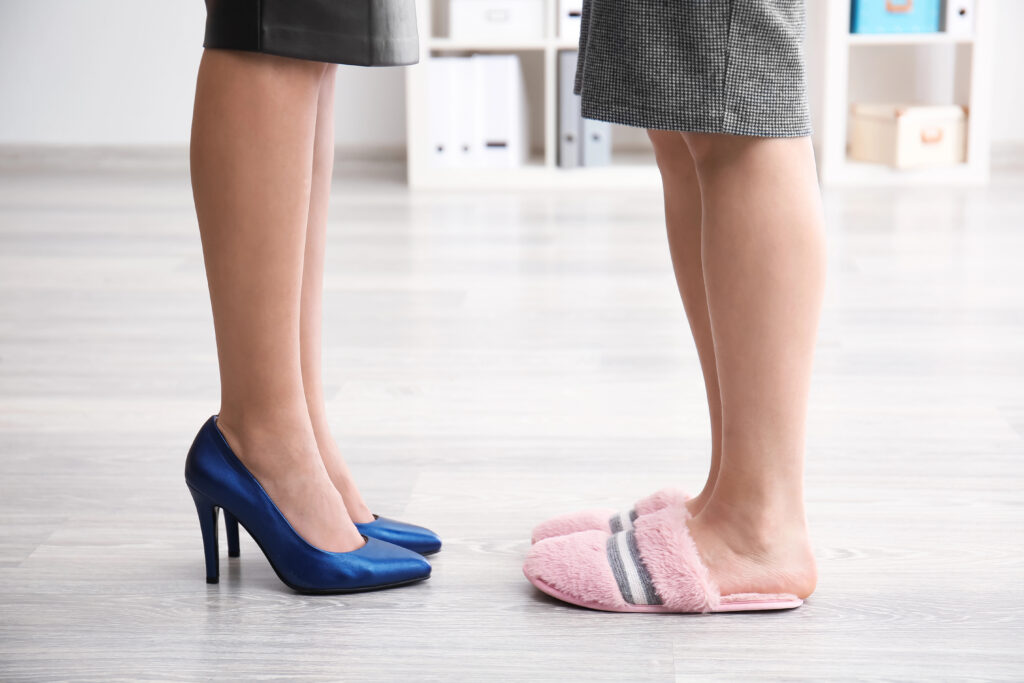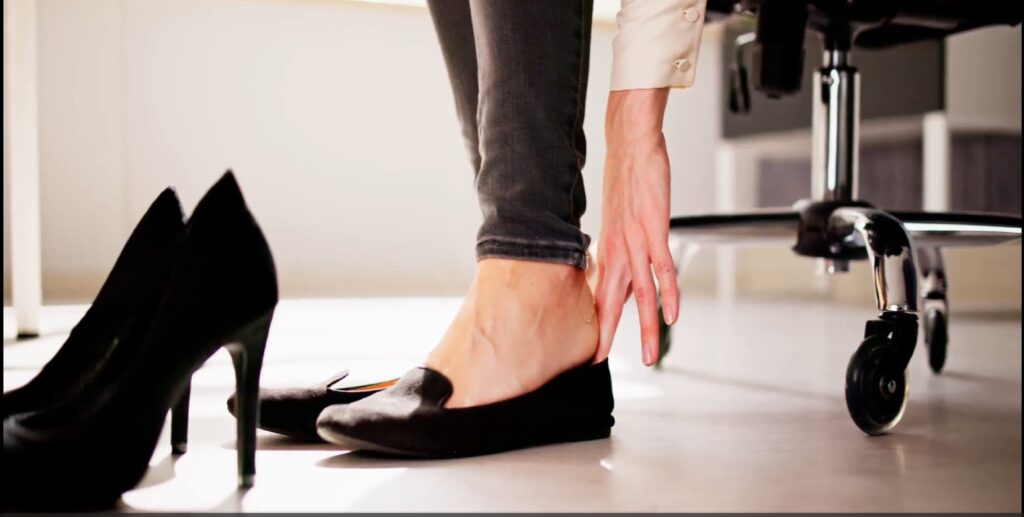A new workplace fad says padding around your office floor in fun socks and slippers is the ‘sole’ of changing company cultures.
WORD FORMATION: Change the word in CAPITALS to fill in the blanks.
Some workplaces have strict shoe policies that align with their office wear rules, other places may be way more chill about you turning up on dress-down Fridays in your latest high-fashion kicks. But a report in Fortune suggests that a very different dress code quirk is now the hottest trend in Silicon Valley startups: going shoeless. To say this idea is polarizing is an 1. ………….. [UNDERSTATE], to put it mildly. (…)
It’s a intriguing window to an evolving shift in workplace culture.
One worker at Cursor, Ben Lang, is quoted as saying he’s “only worked at startups that have a no-shoes in office policy,” a fact he mentioned in a post on X that’s gone viral with well over a million views.
His post attracted strong opinions, both on the pro side (with one user saying working at a place like this is now on their “bucket list”), the negative side (one person shared a sneezing emoji, presumably alluding to potential smell issues) and others full of questions. A curious user asked about the policy for visitors, for example, and Lang explained that shoe covers or slippers were available at the 2. ……….. [ENTER]—clearly Cursor’s workers don’t want mud and other debris being tracked in by their visitors. (…)
According to Anita Williams Woolley, a professor of organizational behavior at Carnegie Mellon University’s Tepper School of Business, going shoeless at the office can boost comfort, add to feelings of 3. …………… [INFORMAL] and potentially spark creativity. We live in a time when “4. ……….. [ANXIOUS] is reaching epidemic proportions,” Woolley told Fortune, and making a workplace feel this relaxed can boost creativity and 5. ………… [INNOVATIVE] and help workers by “encouraging them to develop more 6. ……………. [MEANING] relationships at work that foster 7. ………… [COHESIVE] and 8. …………. [COMMIT].”
This is mostly an indirect benefit, largely unrelated to checking out which comically colored socks your colleagues are rocking in the office. But it makes sense, given numerous reports about decaying office friendships, and some fiercely intense work habits that seem to be impacting Silicon Valley startups in the AI era. (…)
It might be worth a try, if only as part of your casual Friday habits. If nothing else, it’ll show your workers you’re flexible and open to new ideas to spark creativity, 9. …………. [FRIENDLY] and change in the workplace. And this kind of fun perk may even help you attract key talent during the 10. …………… [RECRUIT] process, if it helps candidates better understand the office culture of your workplace.
In order to check yor answers/read the whole article, go to: https://www.inc.com/kit-eaton/going-shoeless-is-a-trendy-office-perk-should-your-company-follow-suit
Key: 1. understatement; 2.entrance; 3. informality; 4. anxiety; 5. innovation; 6. meaningful; 7. cohesion; 8. commitment; 9. friendliness; 10. Recruitment
Glossary
to follow suit – to do the same as someone else has done
kicks – (mainly US slang) shoes, especially fashionable sports shoes
quirk – peculiarity
to foster – to promote the growth or development of
to rock – to wear a particular style of clothing, etc. and look good or fashionable
Fill in the gaps in the article extract with one word only.
Workplace perks are 1. …… surprisingly influential factor when companies want to recruit new employees or motivate existing staff 2. ….. reach new heights 3. …… creativity or productivity. Think pitches like, “Come and work for us and you get all this, too … ” Not so long ago, this put hot Silicon Valley startups in the headlines for extraordinary perks like playrooms and in-office slides. More recently, firms 4. ……. dialed back exotic perks and are more likely to offer gym memberships (or, controversially, the chance to go shoeless in the office!). New research, however, says offering your frontline workers perks 5. ……… food or work-sponsored outings actually motivates them more 6. …… gym vouchers or, surprisingly, health benefits.
Marketing researchers led by the University of South Florida examined five types of company-driven benefits like food, social, physical, mindfulness, and health options to find which best boosted 7. ……. experience of customer-facing workers, Phys.org reports.
The researchers found quite clearly that food-related benefits showed the strongest impact 8. …….. workers, with social benefits in second place. They found food perks yielded “stronger direct effects on customer responsiveness and both showing indirect effects through value and indebtedness feelings.” Mindfulness-related benefits ranked third, but physical and health-related benefits exerted the “weakest downstream consequences.” Importantly, the report notes that 9. ……. frontline employees are working in a supportive environment, “the effects of food and social benefits are enhanced.” On the other hand, research showed that “job stressors” and “motivational constructs” did 10. …….. significantly impact the effects of employer-provided wellness benefits.
The investigators also found that offering food and social perks improved workers’ sense of value, and boosted their feelings of workplace loyalty. Workers getting these perks were also more likely 11. …… care 12. …….. the company’s performance, and thus put extra effort into their customer-facing duties.
In order to read the whole article/check your answers, go to: https://www.inc.com/kit-eaton/yes-food-perks-at-work-do-motivate-employees-this-study-says
Key: 1. 1. a; 2.to; 3. of; 4. have; 5. like; 6. than; 7. the; 8. on; 9. if; 10. not; 11. to; 12. about
Discuss
- Do you think offering perks like going shoeless or providing free food reflects genuine concern for employees, or is it more of a marketing tactic?
- How important are workplace perks compared to salary and career growth when it comes to employee satisfaction?
- What are the potential benefits and drawbacks of letting employees go shoeless or wear slippers in the office?
- Do you think some perks might create discomfort or inequality among staff? For example, how might people with foot health issues feel about this?
- Should companies personalize perks based on employee preferences? What challenges might that present?
- Which perk—shoeless offices or food perks—would you find more motivating personally, and why?
- Have you ever experienced an office perk that actually made a difference in your motivation or satisfaction? What was it?
Watch and Revise!
Shoeless Offices & Food Perks
The New Workplace Trends
https://www.cloud.worldwideschool.pl/index.php/s/zPbNTQ2DmzrjxZm
(6413)






